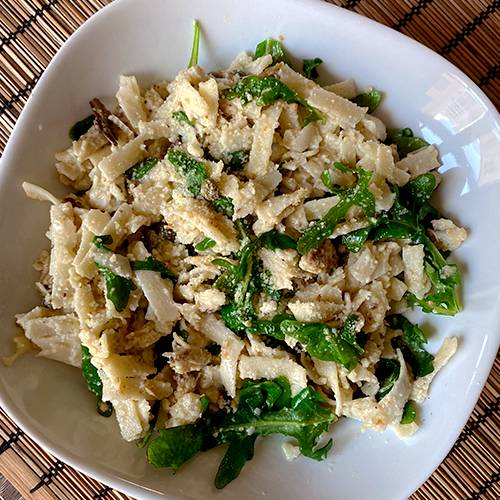As a pescatarian, or someone whose diet is mostly vegetarian but includes fish and seafood and no other meat, my dietary choices are constantly questioned by others. But to me, it’s a decision that I haven’t once regretted. Every day, I “vote with my fork” for the kind of future I want—preferably, one where we still have a planet to live on! (Okay, that was dark, but I’m trying to make a point here. If we maintain the status quo, climate change is only going to get worse, biodiversity loss will be devastating, and our health will certainly suffer.)
Is Seafood Better for the Planet Than Meat?
It’s generally agreed upon that seafood is healthier and more environmentally sustainable than meat; still, beef, chicken, and pork consumption drastically outsizes that of fish and shellfish. Beef consumption has seen a downward trend over the last few decades, but it’s mostly been replaced with chicken, while fish and shellfish consumption has remained constant.Why is this the case? One comprehensive study done in Europe showed that, although most would agree that eating a healthful and sustainable diet is important, barriers such as perceived cost, convenience, habits, and culture stand in the way—often affecting those of lower socioeconomic status more strongly than those coming from wealthier backgrounds.
Is All Seafood Equally Sustainable?
To complicate the issue even further—not all seafood is created equal, so eating a pescatarian diet alone does not guarantee that you’re eating a sustainable diet (although, it is at least a step in the right direction). If you know your fish was wild caught, it’s still hard to know whether the fishery takes into account the health of that fish’s population (i.e., is it being overfished?) and whether they use sustainable methods to catch the fish; in many cases, fisheries harm the natural habitat of the fish they’re catching by using inappropriate gear or technology such as blast fishing.This is where the Marine Stewardship Council comes in.
How Do Seafood Lovers Support Our Planet's Health?
The MSC blue fish label allows people to easily recognize products that are sustainable, wild caught, and traceable, taking out the bulk of the guesswork for seafood consumers! With over 37,000 MSC-labeled products on sale globally, from caviar to canned tuna, it has never been easier to find seafood that meets your lifestyle, taste, budget, and values.Ever since I learned about the MSC blue fish label two years ago, I’ve constantly been on the lookout for it when grocery shopping or at restaurants. I’ve seen it on products in drug stores, Safeway, Whole Foods (of course)… and even McDonald’s! The past few months, I’ve been doing most of my grocery shopping online, and I’ve learned an amazing little trick—if you type “msc fish” into the search bar of the online grocery service you use, you’ll get a list of all the products available with that label! It literally could not be easier to find, if you know what you’re looking for!
So, back to the original question—can going pescatarian save the planet? Like any single action, when taken alone, the answer is probably no. But don’t let this discourage you! Lots of small actions, when taken together, are where the real change happens.
With each meal you eat, you have the opportunity to make an impact. Why not make it a positive one? For me, this was an easy an obvious way to contribute to a healthier planet and a Big Blue Future.
The recipe below may seem fancy, but it can be made in 20 minutes, for less than $5 per serving! Even if you’re not convinced to try a pescatarian diet, hopefully I’ve at least shown you that eating sustainably isn’t as out-of-reach as you might have previously thought!
Lemony Sardine Pasta

Ingredients
- ½ lb pasta
- 1/8 c toasted almond flour or breadcrumbs
- 1 can sardines in oil (I used Henry & Lisa's Wild Sardines in Olive Oil), roughly chopped
- 4 cups leafy greens (I used arugula, but you could also use spinach)
- 2 tbsp capers
- Juice of 1 lemon
- ¼ c Parmesan
Preparation
- Boil your pasta according to package directions (reserve ½ cup of the pasta water).
- Meanwhile, toast your almond flour or breadcrumbs in a dry pan on high heat
- After draining, put your pasta back in the hot pot and add your sardines (including the oil), almond flour/breadcrumbs, capers, and greens. Toss so the greens start to wilt.
- Add some pasta water and lemon juice to create a thin sauce.
Mix in the cheese. - Serve immediately.

